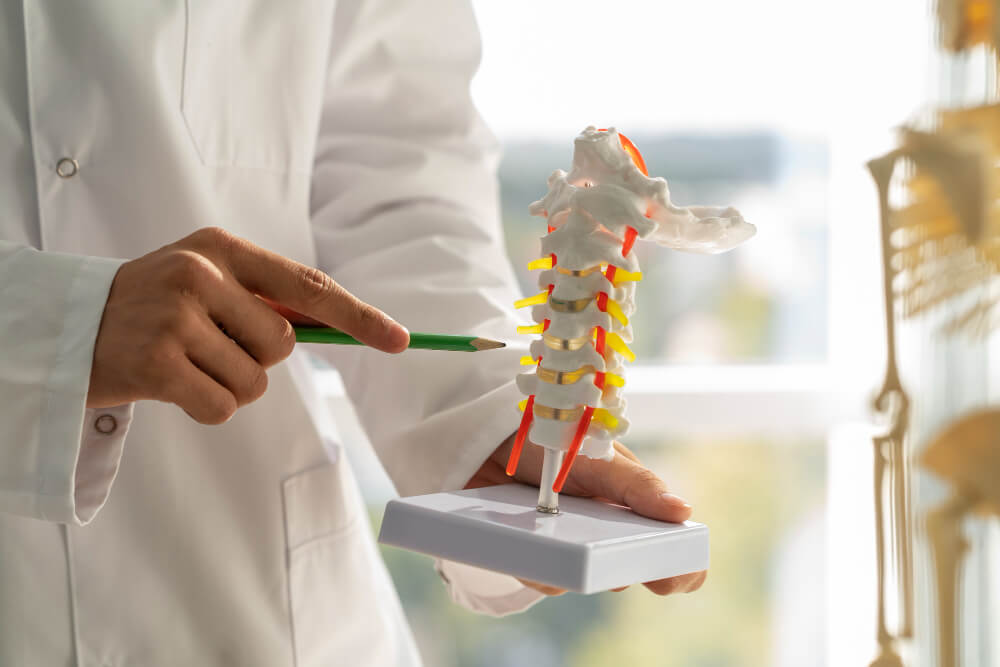Kyphoplasty and Vertebroplasty: Regaining Strength and Reducing Pain After Spinal Fractures
Spinal fractures can be a debilitating experience, causing significant pain and limiting mobility. These fractures often occur in the vertebrae, the bones that stack to form the spinal column. When a vertebra weakens and collapses, it can lead to a condition called spinal compression fracture.
This article explores two minimally invasive procedures used to treat spinal compression fractures: Kyphoplasty and Vertebroplasty. We’ll delve into the causes and symptoms of spinal fractures, explain how Kyphoplasty and Vertebroplasty work, discuss the benefits and risks of each procedure, and explore alternative treatment options.

Understanding Spinal Compression Fractures
Spinal compression fractures most commonly affect the thoracic (mid-back) and lumbar (lower back) vertebrae. These fractures can occur due to several factors, including:
- Osteoporosis: This bone-weakening condition makes bones more susceptible to fractures, even from minor falls or bumps.
- Trauma: A high-impact injury, such as a car accident or fall from a height, can cause a spinal fracture.
- Cancer: Tumors in the spine can weaken the vertebrae, increasing the risk of fractures.
- Age-related degeneration: As we age, the discs between vertebrae can lose their cushioning ability, putting additional stress on the bones.
The most common symptom of a spinal compression fracture is back pain that worsens with activity and improves with rest. Other symptoms may include:
- Loss of height or a hunched back (kyphosis)
- Decreased mobility and flexibility
- Muscle spasms
- Weakness in the legs
- Numbness or tingling in the legs (if the fracture affects nerves)
Diagnosis of Spinal Compression Fractures
If you experience persistent back pain after a fall or other trauma, your doctor will likely perform a physical examination to assess your range of motion and check for tenderness. Imaging tests, such as X-rays, CT scans, or MRIs, can help confirm the presence and location of a fracture.
Treatment Options for Spinal Compression Fractures

Treatment for spinal compression fractures depends on the severity of the fracture, your overall health, and your symptoms. Several treatment options are available, including:
- Rest and pain management: This involves limiting activities that aggravate the pain and using pain medications.
- Bracing: Wearing a back brace can provide support and help you maintain proper posture.
- Physical therapy: Exercises can help strengthen the muscles around the spine, improve flexibility, and reduce pain.
- Medications: Medications can help manage osteoporosis and prevent future fractures.
- Minimally invasive procedures: Kyphoplasty and Vertebroplasty are two minimally invasive procedures used to stabilize fractured vertebrae and relieve pain.
Kyphoplasty: A Closer Look
Kyphoplasty is a minimally invasive procedure used to treat spinal compression fractures. Here’s a breakdown of the process:
Preparation:
- You will likely receive general or local anesthesia before the procedure.
- An imaging device, such as a fluoroscope, will be used to guide the doctor during the procedure.
Procedure:
- A thin needle is inserted through the skin into the fractured vertebra.
- A small balloon is then inflated within the collapsed vertebra to create a cavity.
- Bone cement (polymethylmethacrylate or PMMA) is injected into the cavity to fill the space and stabilize the fracture.
- The balloon is then deflated and removed.
Recovery:
- Most patients experience immediate pain relief after Kyphoplasty.
- You may be able to go home the same day or stay overnight for observation.
- Your doctor will provide instructions on activity limitations and pain management strategies.
Vertebroplasty: Understanding the Procedure
Vertebroplasty is another minimally invasive procedure used to treat spinal compression fractures. It shares some similarities with Kyphoplasty but doesn’t involve balloon inflation. Here’s what you need to know:
Preparation:
- Similar to Kyphoplasty, you will likely receive anesthesia, and imaging guidance will be used.
Procedure:
- A needle is inserted into the fractured vertebra.
- Bone cement is injected directly into the fractured bone to stabilize the vertebrae.
Recovery:
- As with Kyphoplasty, most patients experience immediate pain relief after Vertebroplasty.
- The recovery process is similar, with discharge on the same day or overnight stay in some cases.
Benefits of Kyphoplasty and Vertebroplasty
- Pain Relief: Both procedures are highly effective in providing immediate and long-lasting pain relief. This allows patients to improve their quality of life and return to daily activities.
- Improved Mobility: By stabilizing the fractured vertebrae, these procedures can help restore mobility and flexibility in the spine. This can lead to increased independence and participation in physical activities.
- Reduced Kyphosis: In some cases, spinal compression fractures can cause a hunched back (kyphosis). Kyphoplasty, in particular, can help restore vertebral height and reduce kyphosis.
- Minimally Invasive: Compared to traditional open surgery, Kyphoplasty and Vertebroplasty are minimally invasive procedures. This translates to less pain, shorter recovery times, and fewer potential complications.
- Faster Recovery: Patients typically experience shorter hospital stays and quicker recovery times with these procedures compared to conservative treatment options like bracing.
Risks and Complications of Kyphoplasty and Vertebroplasty
While Kyphoplasty and Vertebroplasty are generally safe procedures, some potential risks and complications exist. These include:
- Cement Leakage: In rare cases, the bone cement may leak outside the intended area, potentially affecting nerves or blood vessels.
- Infection: There is a small risk of infection at the injection site.
- Fracture of Adjacent Vertebrae: In some cases, the procedure may put stress on nearby vertebrae, increasing the risk of fracture.
- Pulmonary Embolism: This is a rare but serious complication where a blood clot travels to the lungs.
- Allergic Reaction: An allergic reaction to the bone cement is possible.
It’s important to discuss these potential risks with your doctor to understand if these procedures are right for you.
Who is a Candidate for Kyphoplasty and Vertebroplasty?
Kyphoplasty and Vertebroplasty may be suitable for patients with:
- A painful spinal compression fracture caused by osteoporosis or other weakening conditions
- A recent fracture that hasn’t healed on its own with conservative treatment
- A fracture that has caused significant pain and limited mobility
- Relatively good overall health
Your doctor will consider your individual medical history, the severity of the fracture, and your overall health to determine if Kyphoplasty or Vertebroplasty is the right treatment option for you.
Alternative Treatment Options for Spinal Compression Fractures
If Kyphoplasty or Vertebroplasty are not suitable for you, other treatment options are available:
- Conservative Management: This may include rest, pain medication, bracing, and physical therapy to manage pain and promote healing.
- Vertebral Augmentation with Balloon Kyphoplasty (VBK): This is a newer variation of Kyphoplasty that utilizes a special balloon designed to minimize the risk of cement leakage.
- Vertebral Body Stenting: This minimally invasive procedure involves implanting a stent into the fractured vertebra to restore height and stability.
- Kyphoplasty with Biodegradable Balloons: This variation of Kyphoplasty uses balloons that dissolve over time, potentially reducing the risk of complications associated with permanent implants.
These are just some of the alternative treatments available. Your doctor will discuss the best course of action based on your specific needs.
Conclusion
Spinal compression fractures can be a painful and debilitating condition. Kyphoplasty and Vertebroplasty offer minimally invasive and effective treatment options for stabilizing fractured vertebrae and relieving pain. These procedures can improve mobility, reduce kyphosis, and enhance quality of life. However, it’s crucial to discuss the potential risks and benefits with your doctor to determine if these treatments are the right choice for you.
